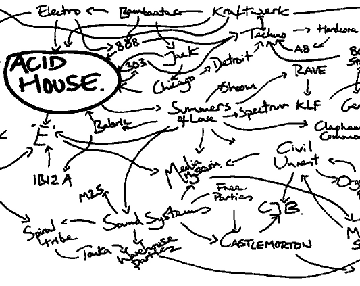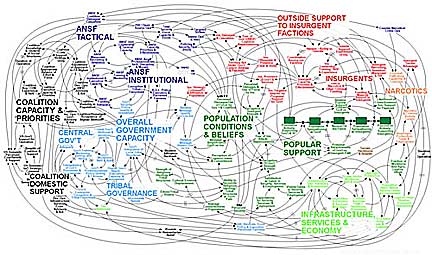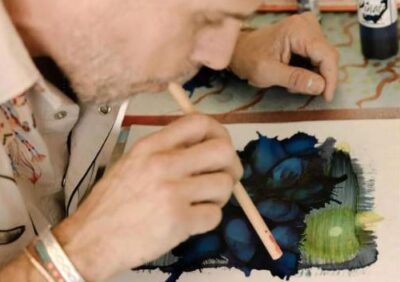COIN: Pentagon Postmodern

In 2004 Jeremy Deller won Britain’s most prestigious art award – The Turner Prize – for his short video, Memory Bucket.
Documenting Deller’s travels through the State of Texas, the film impressed the judges at the Tate Modern in London sufficiently enough for them to honor Deller with their highest award, plus a check for $48,000. That Deller admitted he cannot paint, draw, or sculpt to save his life was no impediment to his being proclaimed numero uno in the world of postmodern art; at least for a brief moment in time.

Deller had actually submitted a number of installations to the Tate’s annual art competition, Memory Bucket being just one of them. In the room at the Tate that displayed all of Deller’s works, one could find his wall chart, The History of the World. Supposedly an exploration of the connections between working class brass bands and the 1980s acid house scene, the chart is a jumble of hand scrawled lines and arrows, along with the names of important bands, events, places, and concepts in music.
Deller’s chart is all but incomprehensible – even to music lovers and historians. But then, striving to create works that are easy to comprehend has never been a strong point for postmodern conceptual artists. Nonetheless, Deller’s The History of the World has been an obvious inspiration to a rather unlikely group of artists, the U.S. military’s Office of the Joint Chiefs of Staff – who are also reported to possess a total lack of skill when it comes to painting, drawing, or sculpting.

Trying their hands at conceptual art, the Joint Chiefs have created a wall chart installation titled Afghanistan Stability/COIN Dynamics – Security, a brash reference to the U.S. counterinsurgency strategy, “COIN” for short, which the Obama administration is currently applying in the Afghan war.
While their work has a strong political dimension, the Joint Chiefs have to their credit avoided the tedious moralizing so common with much of today’s political art. By dispensing with outdated notions of craft, skill, and narrative (at least one that makes any sense), the Chiefs have given us a hardheaded no-nonsense look at what really lies behind America’s “necessary war,” confusion, bewilderment, and stupefaction.
The eddy of lines and arrows swirling across the face of Afghanistan Stability/COIN Dynamics – Security, pulls the viewer into the work’s dense subtext having to do with counterinsurgency strategy for Afghanistan, and the impenetrable text that floats on the surface of the piece like an opaque cloud of obscurantist chatter (“Western Affiliation Backlash-Acceptance of Afghan Methods-Overall Government Capacity”) only points to the futility of attempting to make sense of the world. To fully appreciate this ephemeral work, one must put aside logic, as well as any attempt to understand history – just as the Joint Chiefs have clearly done.

If Jeremy Deller gave us a fractious view of the world with his unsteady scribbles and nervous squiggles, the Joint Chiefs have delivered order and tranquility with their clean lines and methodically arranged catchphrases. They have created an installation to rival the Turner Prize winning wall chart produced by Mr. Deller; in fact Afghanistan Stability/COIN Dynamics – Security is a postmodern masterwork that will long be remembered after the last body bags are flown out of Kabul.
Every good postmodernist knows that an artwork’s true value is determined solely by its price tag and not some foolishness like “intrinsic spirituality,” or gads… “beauty.” It was wonderful when Jeremy Deller was given $48,000 along with his Tate prize, and it was even more fantastic when Damien Hirst sold his diamond encrusted platinum skull sculpture For the Love of God, for $100 million. But with the creation of the Joint Chief’s Afghanistan Stability/COIN Dynamics – Security piece, one need ask, what is being brought into the world? It might be the art of the 21st century! Surely by its price tag alone that is so; it took the Joint Chiefs’ $636 billion to produce Afghanistan Stability/COIN Dynamics – Security, making it the most expensive piece of art ever produced. Time will tell whether or not there will be a buyer.
The Daily Mail wrote an extensive review of the Joint Chief’s Afghanistan Stability/COIN Dynamics – Security installation piece that should be read by all. Now that the war is finally escalating in Afghanistan and spilling over into Pakistan, one can only imagine what the next conceptual work from the Office of the Joint Chiefs of Staff will be like… and what it will cost.



